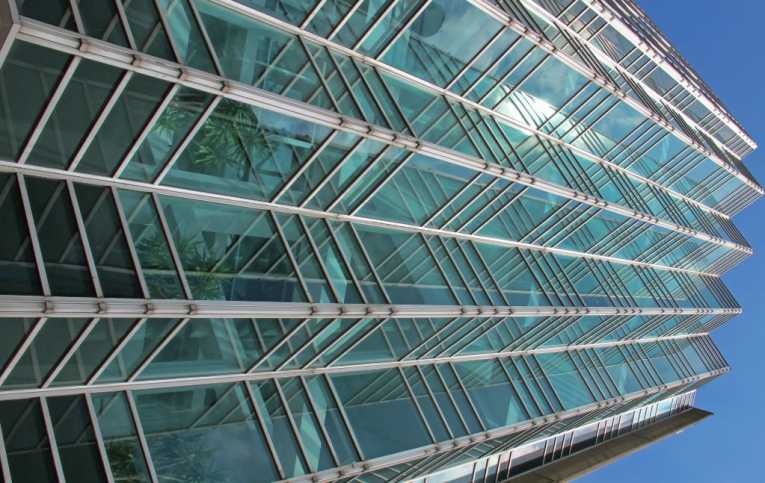As bizarre as it may seem, the University of Greenwich School of Architecture and Construction is poised to use ethical synthetic biology to create 'living' materials that could be used to clad buildings and help combat the effects of climate change.
Researchers from the University of Greenwich are collaborating with others at the University of Southern Denmark, the University of Glasgow and University College London to develop materials that could eventually produce water in desert environments or harvest sunlight to produce bio fuels.
Working with an architectural practice and a building materials manufacturer, research is taking place using protocells to fix carbon from the atmosphere or to create a coral-like skin, which could protect buildings. For those not in the know, protocells are made from droplets of oil in water that allow soluble chemicals to be exchanged between the drops and their surrounding solution.
Professor Neil Spiller, the new head of the University of Greenwich School of Architecture and Construction and himself a professional architect, is most enthusiastic about the use of protocells. Previously Vice Dean and graduate programme director at the University College London's Bartlett School of Architecture, he has been investigating their use for some time.
He said that the research team at Greenwich was currently looking at methods of using responsive protocells to clad cities in an ethical, green and sustainable way. A key feature was the desire to use ethical synthetic biology to create large scale, real world applications for buildings.
The Centre for Fundamental Living Technology at the University of Southern Denmark has already managed to get cells to capture carbon dioxide from solution and convert it into carbon-containing materials. Such cells could be used to fix carbon to create ways of building carbon-negative architecture.
An example of how this theory can be put into practice was seen at the 2010 Venice Biennale, where in the Canadian Pavilion Canadian architect Philip Beesley created an installation Hylozoic Ground that showed how protocells may be used to create carbon-negative architectures. Dr Rachel Armstrong, Teaching Fellow at UCL's Bartlett School of Architecture designed protocells within the installation that recycled carbon dioxide exhaled by visitors into carbon-containing solids.
The same principle could be used to stabilise the city of Venice's foundations by growing an artificial limestone reef beneath it. Professor Spiller explained how this might be done.
"We want to use protocell bubbles to fix carbon or precipitate skin that we can then develop into a coral-like architecture," he said, "This could petrify the piles that support Venice to spread the structural weight-load of the city."
Professor Spiller is anxious that his tenure at Greenwich's School of Architecture and Construction will see the introduction of a whole host of new technologies into architectural practice. These include nana, digital and synthetic biology technologies.
Plans are afoot to move his department to a new £70 million purpose-built building in central Greenwich and with all these exciting developments in the offing it seems that the additional space could prove to be most useful.










